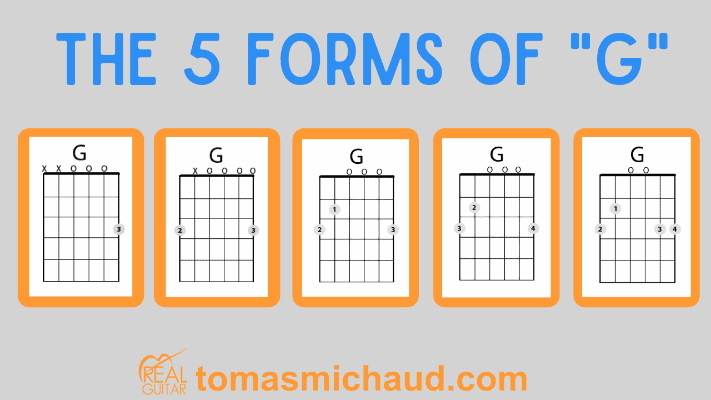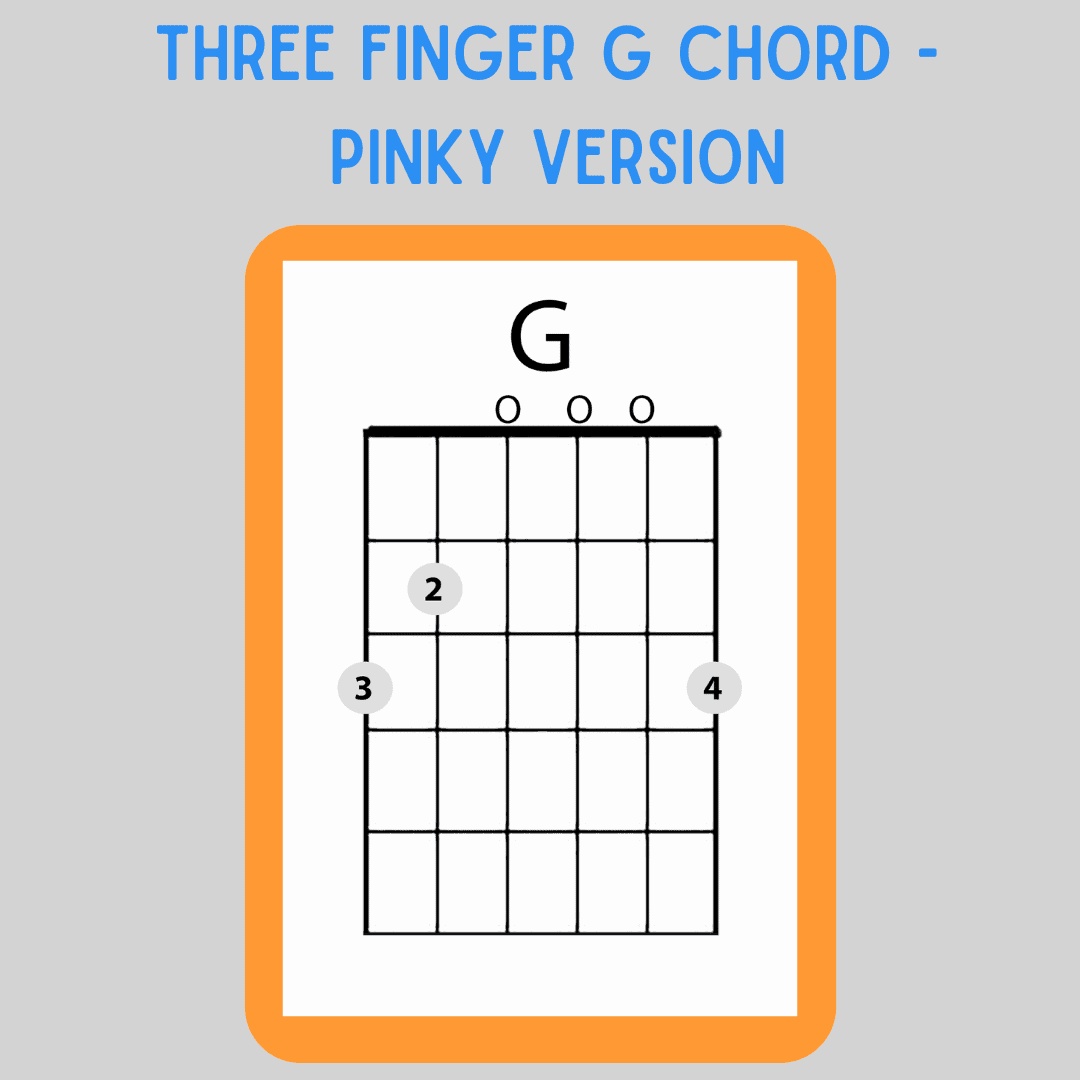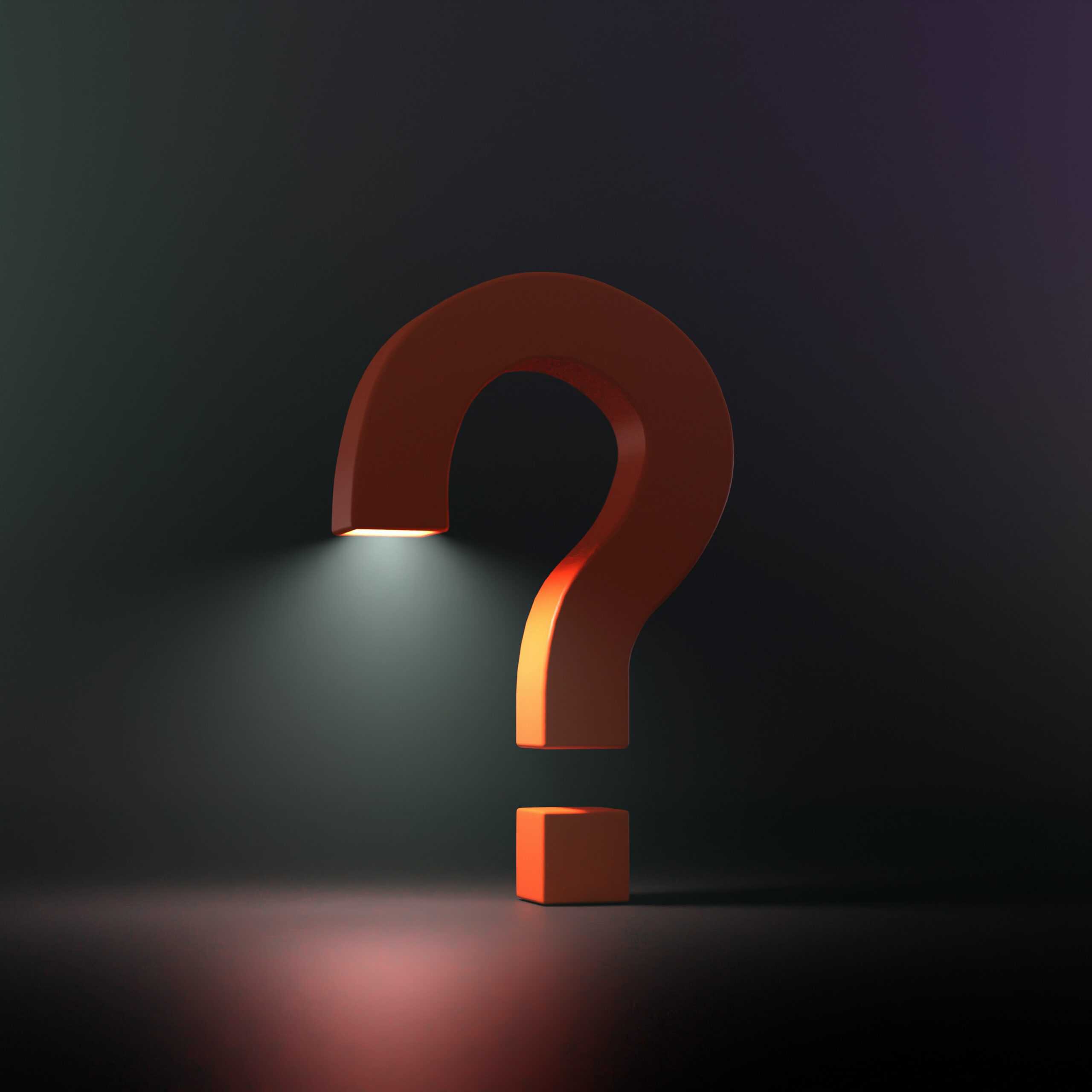
QUESTION: I have seen books and other people play the G chord many different ways. Which is the best way to play it?
ANSWER: it depends… don’t you hate it when people say that? I couldn’t resist 🙂
Now for a more thorough useful answer.
If you’ve been paying attention to my blog posts and my free videos you’ll see me use a few forms of the G chord. I usually use most often the three finger G that includes my pinky because I find it one of the most versatile forms of G.
If you’ve enrolled in my guitar course Real Guitar Success you either will find out (or have already found out) that I teach five different forms of the open G chord. None of them are right or wrong. They all have a use depending on the situation. In this post I’ll show you the five forms that I use and explain a little about when I find them useful.
Single Finger G Chord

The first form is the easiest form. It uses only one finger… the third finger, sometimes called the ring finger.
This form is the one I often use for young children or for any beginner that finds it difficult to finger basic chords.
My attitude is there is absolutely no shame in starting off with the simplest form.
In fact getting started is much more important, and once you begin playing it will become easier to move your fingers and make the more complex forms.
Two Finger G Chord

This next form builds on the single finger G. We’ll keep the third finger on the first string third fret and add the second finger on the six string third fret.
This at a stretch to the chord but allows you to play all six strings. Well… That’s only partially true.
If you look carefully at either my video or the chord diagram you’ll see that I’m actually muting out the fifth string. On the chord diagram you will see an “X”. That means mute.
For most applications this one sounds pretty much the same as the three finger G chord.
It also allows you to play the bass note in the six string which the single finger G does not.
It’s also not a very big leap to go to the three finger G chord. So… let’s do it.
Three Finger G Chord

The first form of the three finger G chord I teach uses the first, second and third fingers.
This is a useful G chord and is often the first one people learn. In many cases I skip the two finger version and go right to this one.
Three Finger G Chord – Pinky Version

Yes, I’m talking about the little finger. I like to call it the “pinky” version because everybody gets it when I say that.
To make this chord I’m using the second, third and fourth (pinky) fingers.
Now this one is actually my favorite and most used form of the G chord.
The reason for that is that it’s easier to go from this form to the C and D chords. You’ll find that it is pretty common to go to these two chords from G.
Now it does take a little strength in the pinky. Many beginners have a hard time with that.
I usually don’t go there at first and let them play for a while and get stronger. It’s usually just a matter of time.
Personally I would recommend NOT stressing over it. It does help to do exercises that strengthen the pinky like my Speed Developer #2 exercise.
Four Finger G Chord

This is actually my second favorite form of the G chord. For some people this is easier than the three finger form with the pinky. I think it’s because the third finger feels like it’s supporting the pinky.
I like this form because it’s very easy to go to a Dsus4 chord from there. Still, I don’t use it anywhere near as often as I do the three finger G with the pinky.
Which Form Should I Learn?

If you’re a beginner student starting out try experimenting with the first two forms of the G chord.
See which one is working for you.
With either one you’ll find it easier to add fingers as you get more experience playing.
If you’ve been playing for a while, or if you are a beginner but find you have a little more dexterity I want you to learn all of the last three forms.
Start with one and get comfortable with it. Then had another, and finally the third.
To really get comfortable with them you’ll need to apply them using songs and exercises.
That’s where you really learn where each of the different forms is best.
Unlock the Power of the G Chord Family: Learn to Play Your Favorite Songs!
So you’ve learned the G chord and you are wondering, “Now what?!” Check out my essential RGS lesson Switching Chords: G to C to D.
Learning how to switch between chords smoothly and quickly is an essential skill that every guitar player needs to master. This lesson will teach you how to do just that, by introducing you to the popular chord progression of G-C-D.
This common chord progression is found in countless songs. Mastering it will open a whole new world of musical possibilities for you! You’ll also get 2 FREE song lessons AND access to a fun guitar exercise game called The Chord Switching Game. This exercise has helped countless students achieve greater abilities in easily moving between chords.
Members of Real Guitar Success (RGS) Academy can access this lesson here.
Not a member yet? No problem...
Sign up here FREE for 14 days to RGS Academy to get access to this lesson, and more!
I’m hoping you stick around… but if not, the 2 weeks should be enough to make great progress on your guitar.
Tell Us What You Think - Please Comment Below!
We would love to hear your comments and questions. What specific things are you struggling with while learning guitar?

“G” Tomas, I needed that. Thanks. Mike
Hi Mike,
I’m glad that you found it 🙂
You can SUBSCRIBE to Tomas Michaud’s YOUTUBE Channel here: http://bit.ly/1jBd9MC for more free guitar lessons.
Warm Regards,
Hazel
Starland Guitar
Customer Support
apart from being a good teacher, you seem to be a good guy… thank you, very much. From Argentina, a 78 young man Juan Antonio
Thanks for your article. I wanted to add something to it because on other sites I have seen many people wondering how in the hell you get your pinky to make the G chord. I was one of them, and couldn’t find the answer.
Here is what I did to train my fingers to make the stretch.
Put fingers two and three on the top two strings as required to play the G chord, then put your pinky UNDER the neck of the guitar and just keep it there for a couple of minutes. Remove all of the fingers and repeat this a few times over the course of your practice.
When I first started trying it, it seemed impossible. In just two days, my pinky was easily able to push the string while making the G chord, and in fact on the second day I had to reach up slightly with my pinky to get to the string.
I have determined (although I am a definite beginner with less than a month of playing) that the pinky G is the way to go and this is the best and fasted way to get your hand doing it.
I hope this helps others. Keep up the good work.
This is great Darell. I’m going to suggest this with students. Thanks for sharing. – Tomas
Thank you for this 🙂
Cool. I will use the “Three Finger G Chord – Pinky Version”
Somehow I dont like using the index-g chord..
I prefer the pinky G also.
Again another great informative lesson thanks Tomas
You’re welcome Frank. A lot of people would ask me about this so I decided to create this post. -Tomas
i have a damged 1st finger and find it really hard to play the g chord without bad finger dampening the sound same if the f chord
Ouch… sorry to hear that Jim. There may be ways to work around that. Several famous guitar players had damaged fingers (Jerry Garcia comes to mind).
Thanks Tomas. I have often wondered whether I am playing the “right” G chord or not. So confusion starts to creep in. Which leads to a “ I, will never get this right “ feeling which leads to “it’s all too hard “ feeling. And then your posts give me hope .
Many thanks
Paul
I use my 1st, 2nd, and 3rd fingers to make a G cord. Using the pinky/4th seems to offer a smoother transition to a C cord, but i am too set in my way to change what i leaned years ago. I also use my 1st finger on the B string to make an A cord.
I’m glad you found something that works for you Chad. – Tomas
Hi Tomas!
I saw a "G" chord tabbed out with the 2nd finger on the low E at 3rd fret, 1st finger on 2nd fret of A string, and pinky on B string at 3rd fret.
Is there a name for this kind of G chord or could it be a mistake on the part of the person who tabbed out the song?
Your thoughts on this would be greatly appreciated!!!
I don’t know a name for this but it is one of the less common fingerings for a G chord. I would use this in fingerstyle guitar.
Thank you so much for this overview of different ways if playing the G chord. As a person with rather small and inflexible hands, I have found it quite difficult to get the three finger version right if having to place the ring finger on string 6. I am really glad to see that placing the pinky there instead is a legit way of nailing it. I guess as a beginner, I look for confirmation that the way that seems easiest for me is acceptable, in part because I have been somewhat worried that doing things in 'alternative' ways (from what is described in the books I have seen) would ultimately hamper my development.
I want to enroll in the course, but can’t get an answer back. Do you teach those who play electric guitar as well? Want to get in on the 14 day trial for $1